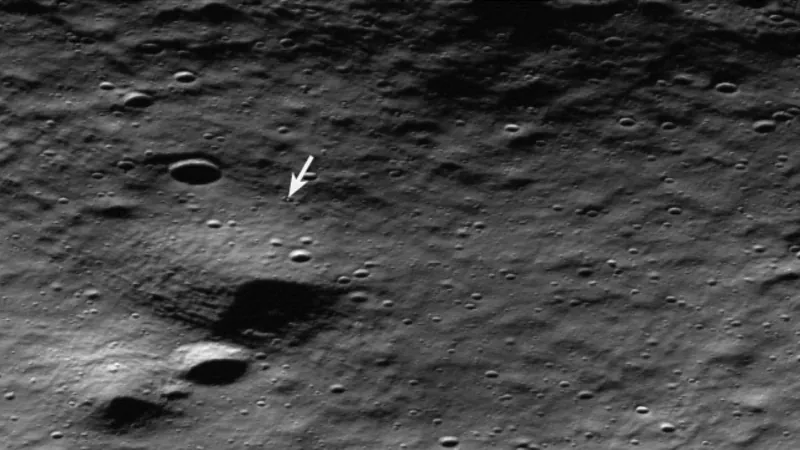
Shocking Discovery: Dead Athena Moon Lander Spotted Inside Its Crater Grave – Stunning Photos Released!
2025-03-13
Author: William
The Fate of Athena
The final resting place of the Athena moon lander has finally been unveiled, and the revelations are both fascinating and tragic.
Mission Overview
The Athena lander, developed by Houston-based Intuitive Machines, met a grim fate during its landing attempt on March 6. The mission aimed to explore the lunar south pole, but the lander tipped over upon touchdown and ended up lying on its side within a small crater.
This precarious position severely limited its solar panels' ability to generate power, leading to Intuitive Machines declaring the mission a failure on March 7, just a day after the unfortunate incident. Interestingly, this was the second lunar mission for Intuitive Machines; their first lander, Odysseus, faced a similar fate during its February 2024 landing yet managed to operate longer.
Images from Space
Before its demise, Athena transmitted several images of its surroundings, allowing scientists to gather some data. Recently, the NASA's Lunar Reconnaissance Orbiter (LRO) captured high-resolution images of Athena and its tragic landing site in the Mons Mouton area, approximately 100 miles (160 kilometers) from the lunar south pole.
On March 7, LRO provided an incredible oblique view of the lander, and just three days later, another photo was taken for a closer examination of Athena nestled in the shadowy floor of a 65-foot-wide (20 meters) crater.
Mission Significance
Despite the unfortunate end, Athena was part of a mission designated IM-2, which was supported by NASA's Commercial Lunar Payload Services (CLPS) initiative. This program aims to facilitate the delivery of scientific instruments on private lunar landers, paving the way for a new era of lunar exploration.
Unfortunately, the experiments onboard Athena, featuring innovative technologies like the MAPP rover from Lunar Outpost and a hopping spacecraft called 'Grace,' didn't get the chance to execute their planned scientific endeavors.
Lessons Learned
There is a silver lining to this story. Although Athena's operating time was short-lived, Intuitive Machines believes the mission's findings will provide crucial insights for future explorations in this under-researched region, believed to have substantial reserves of water ice.
"This southern pole region is lit by harsh sun angles and has limited communication with Earth," a company spokesperson noted in a March 7 update. "The rugged terrain has deterred exploration efforts, but we believe the lessons learned from IM-2 will open up this area for further discoveries."
The Nature of Exploration
What’s more, Athena's downfall came just four days after another CLPS-supported lander, Firefly Aerospace's Blue Ghost, successfully reached the moon's northern hemisphere. This highlights the unpredictable nature of space exploration, where triumphs and setbacks often go hand in hand.
Future of Lunar Missions
As we process these images of Athena, what new secrets might the moon still hold? Stay tuned as this story develops and preparations for further lunar missions are set into motion!









 Brasil (PT)
Brasil (PT)
 Canada (EN)
Canada (EN)
 Chile (ES)
Chile (ES)
 Česko (CS)
Česko (CS)
 대한민국 (KO)
대한민국 (KO)
 España (ES)
España (ES)
 France (FR)
France (FR)
 Hong Kong (EN)
Hong Kong (EN)
 Italia (IT)
Italia (IT)
 日本 (JA)
日本 (JA)
 Magyarország (HU)
Magyarország (HU)
 Norge (NO)
Norge (NO)
 Polska (PL)
Polska (PL)
 Schweiz (DE)
Schweiz (DE)
 Singapore (EN)
Singapore (EN)
 Sverige (SV)
Sverige (SV)
 Suomi (FI)
Suomi (FI)
 Türkiye (TR)
Türkiye (TR)
 الإمارات العربية المتحدة (AR)
الإمارات العربية المتحدة (AR)